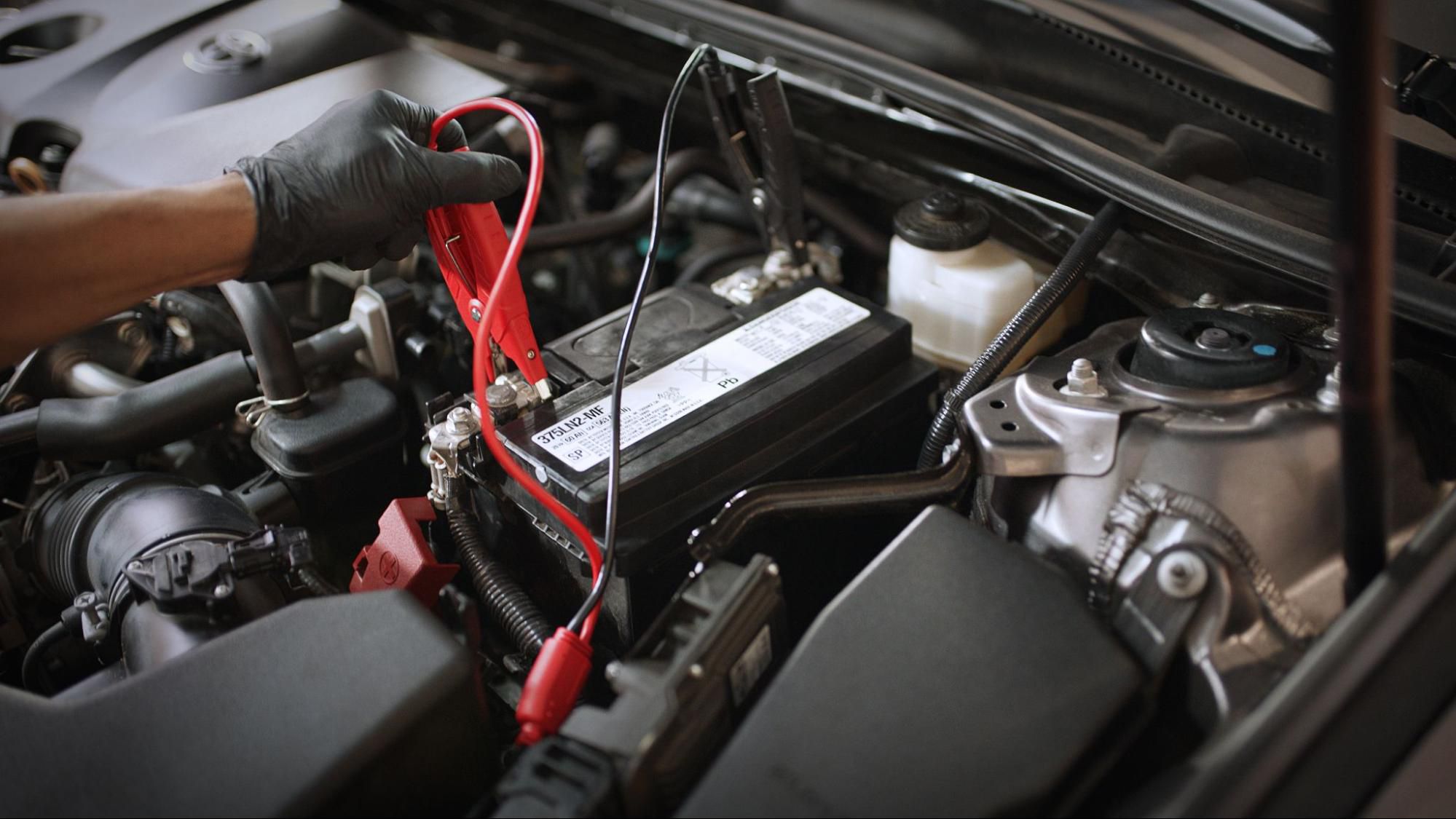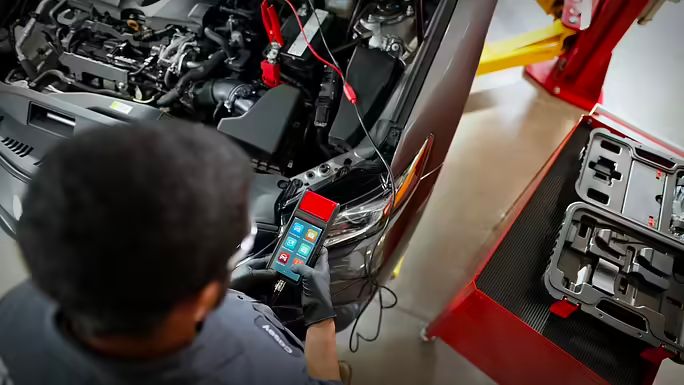Many drivers know the basics when jump-starting a standard vehicle, but not many know that hybrid car batteries sometimes require a different approach. In fact, with various hybrid and electric vehicles on the market, not every method will be the same for every HEV or EV.
Learn how hybrid 12-volt batteries function, what can cause them to die, and how to get back on the road with a jump-start in this guide.
Note: Hybrid models vary, meaning this information may not apply to your exact vehicle. The details below are general guidelines. Reference your owner's manual for specifics.
Hybrid High-Voltage and 12-Volt Car Batteries: The Basics
Hybrid vehicles combine the function of a combustion engine — found in most standard cars — with that of an electric motor. The electric motor is powered by a high voltage battery to help propel the vehicle. Hybrids alter between these two propulsion sources when you're on the road and can utilize the combustion engine to help recharge the high voltage battery.
Hybrid vehicles also recharge their high voltage battery packs through a process known as regenerative braking. Regenerative braking occurs when you brake, and the energy produced by each wheel recharges the high-voltage battery. With plug-in hybrids, there is also the added option to recharge the high voltage battery by way of a charging cable.
Additionally, HEVs with a 12-volt battery and low voltage system often replace the alternator (a standard car component) with a DC-DC converter. This converter charges the 12-volt battery and powers vehicle accessories.
How Long Do Hybrid 12-Volt Car Batteries Last?
The average life of a hybrid car battery varies. However 3 to 5 years is pretty standard. Additional vehicle electrical accessories and local climate can impact the life span of the 12-volt battery.
Common Causes of a 12-Volt Hybrid Battery Discharge
Hybrid car batteries may become discharged for several reasons, and it's not always easy to spot the root cause. Here are a few common causes to be on the lookout for.
Loose Battery Terminals
Loose battery terminals are a common problem in standard vehicles and hybrids. To ensure that this issue isn't the cause of your woes, inspect your battery terminals when the vehicle is turned off.
Extremely Cold Temperatures
Cold weather can do a number on most vehicles, including hybrids. In frigid temperatures, the 12-volt battery can be impacted, especially if it's located outside the vehicle under the hood. The cold weather slows down battery chemistry impacting the available cold cranking amps.
Parasitic Draws
Parasitic draw occurs when an electrical component or accessory drains your car battery. Such as a cabin light being left on in a parked vehicle due to a door not being completely closed. This can cause your low voltage or 12-volt battery to lose charge.
Many hybrid vehicles come equipped with a battery protection function that terminates power in instances of over-discharge. However, you should be wary of this potential problem by turning off or unplugging electrical components and accessories like your headlights, phone chargers, etc., when your vehicle is not in use.
How to Jump-Start a Hybrid Battery
Can you jump a hybrid car battery? Yes. Just like standard vehicles, a hybrid can be jump-started when the battery is discharged. HEVs use a typical 12-Volt battery for starting just like a standard vehicle. Learning how to start a hybrid car with a dead battery is relatively simple. However, there are precautions, as with anything electrical, that you need to take.
The steps below may help you jump-start your hybrid properly without harming yourself or your vehicle.
Note: Don't allow any jumper cable connectors to touch unless fully disconnected.
- Consult your owners manual for procedures specific to your vehicle
- Ensure your vehicle is parked on a flat, dry surface
- Turn off your vehicle and all electrical components (i.e., radio, headlights, etc.) and engage your parking brake
- Place the positive clamp (+) or (red) on the positive battery terminal of the discharged battery or positive jump post.
- Place the positive clamp on the positive terminal of the good battery.
- Place the negative clamp (-) or (black) on the negative terminal of the good battery.
- Place the negative clamp on the negative battery terminal of the discharged battery or negative jump post. (Note: some vehicles do not have an obvious negative terminal. If yours doesn't, connect the negative clamp to a stationary, unpainted metal point beneath the hood away from moving parts).
- Start the engine of the good battery vehicle, slightly pressing the accelerator pedal for about five minutes.
- Start the discharged hybrid.
- Remove the negative clamp from the previously discharged battery.
- Remove the negative clamp from the good battery.
- Remove the positive clamp from the good battery.
- Remove the positive clamp from the previously discharged battery.
Get Recharged at Firestone Complete Auto Care
Knowing how to jumpstart your hybrid safely is an essential skill to have in times of need. And doing it the right way can help prevent bodily harm and potential damage to your vehicle. If you feel that jumpstarting your car is a task better left to professionals, reach out to your nearest Firestone Complete Auto Care to confirm whether EV/hybrid services are available in your area.



